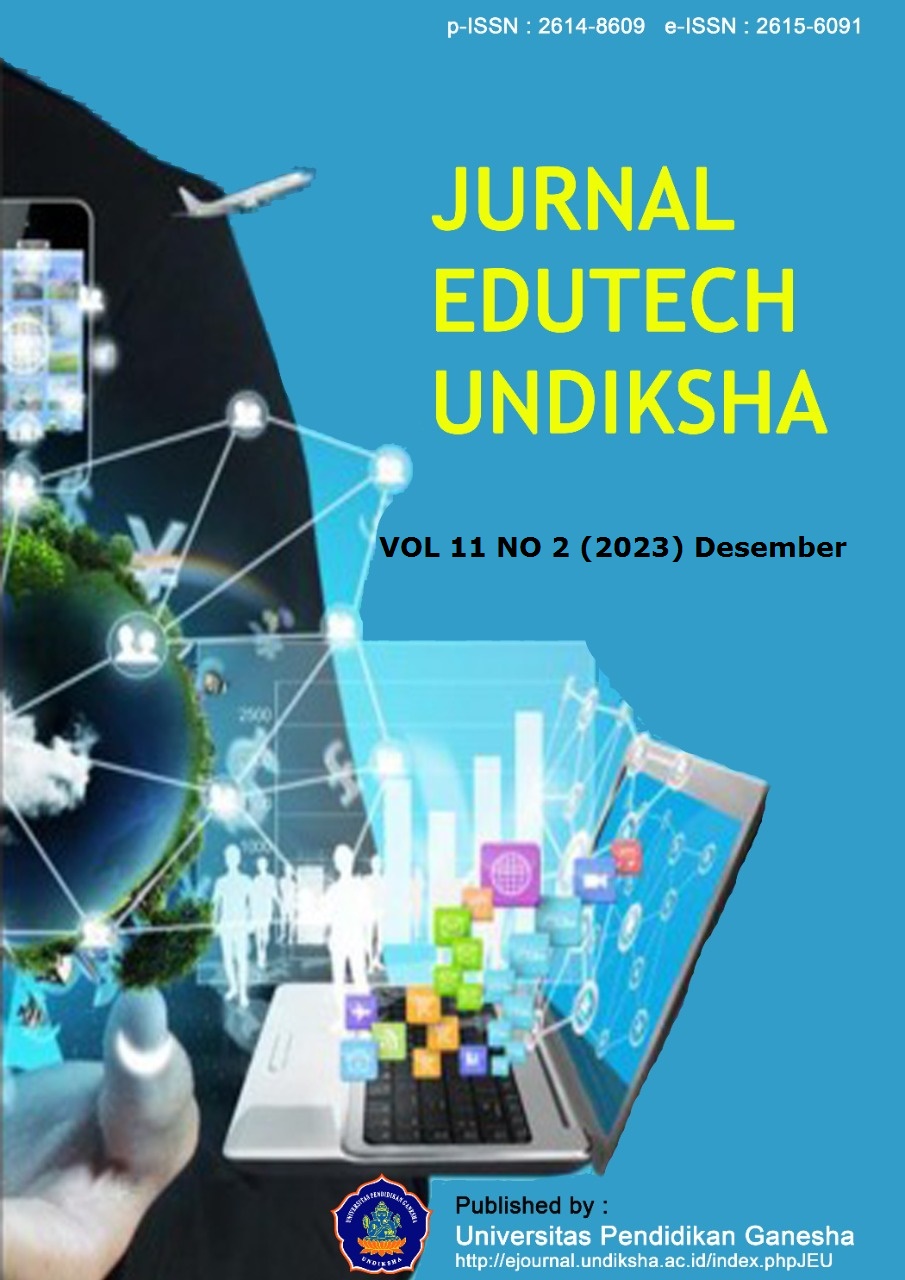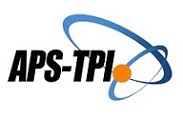Android-Based SIGAP Application to Increase the Effectiveness of Student Management
DOI:
https://doi.org/10.23887/jeu.v11i2.53690Keywords:
SIGAP App, Android, Learner ManagementAbstract
There needs to be better relationships between parents and schools to improve student discipline and increase achievement. Collaboration between parents and teachers should improve student discipline and achievement. This research aims to create an Android-based SIGAP application to increase the effectiveness of student management. This research is development research using the Borg and Gall model. The research subjects were the Principal, Deputy Principal for Student Affairs, teachers, students, and parents. Data collection techniques use interviews, documentation studies, and questionnaires. The data analysis technique uses quantitative descriptive analysis for quantitative data and the Miles and Huberman model for qualitative data. The resulting product is an Android-based SIGAP application, a book containing a description of the SIGAP application, a guide for teachers, a guide for students, and a guide for parents. Product Validation Results ICT experts validated the SIGAP Application with results of 89% and management experts with 96% or a very good title. Trials are given to teachers, students, and parents. The test results for teachers were 93%, for students 92%, and for parents 85%. The conclusion is that the SIGAP application is effective to use.
References
Abdul-kahar, A., & Shahrin Suleiman, E. (2018). A Contextual Framework of Henry Fayol's 14 Principles of Management for the Public Sector Efficiency and Effectiveness of Policy Responsibilities by a Government. Journal of Advanced Research in Business and Management Studies, 11(1), 46–61. https://www.akademiabaru.com/submit/index.php/arbms/article/view/1291.
Albab, U., Purnamasari, H., & Isman, S. (2021). The Influence of the Tracer Package Application Media Through the Problem Based Learning Model on Motivation and Learning Outcomes in Network Infrastructure Administration Subjects for Class Xi Kindergarten Students at SMKN 2 Bangkalan. Exemplary Journal, 6(2), 85–94. http://journal.unirow.ac.id/index.php/teladan/article/view/269. DOI: https://doi.org/10.55719/jt.v6i2.269
Alfisyah, M. (2021). Student Management. Isema Journal: Islamic Educational Management, 3(2), 53–63. https://doi.org/10.15575/isema.v3i2.5009. DOI: https://doi.org/10.15575/isema.v3i2.5009
Arfiariska, PA, & Hariyati, N. (2021). Implementation of Student Management from a Character Education Perspective. Inspiring Journal of Educational Management, 9(1), 648–663. https://ejournal.unesa.ac.id/index.php/inspirasi-manajemen-pendidikan/article/view/39764.
Assahary, SM, Barlian, E., Nurdin, S., & Zulmuqim, M. (2017). The Development of Thematic Learning Model to Improve Students' Character in an Integrated Learning of Religion Education and Environment Towards Students in Adiwiyata School. International Journal of Multicultural and Multireligious Understanding, 4(6), 1. https://doi.org/10.18415/ijmmu.v4i6.95. DOI: https://doi.org/10.18415/ijmmu.v4i6.95
Barni, M. (2019). Challenges for Educators in the Millennial Era. Transformative, 3(1), 99–116. https://doi.org/10.23971/tf.v3i1.1251. DOI: https://doi.org/10.23971/tf.v3i1.1251
Bello, A.A., Chiroma, H., Gital, AY, Gabralla, L.A., Abdulhamid, S.M., & Shuib, L. (2020). Machine learning algorithms for improving security on touch screen devices: a survey, challenges and new perspectives. Neural Computing and Applications, 1(1), 1022–1034. https://link.springer.com/article/10.1007/s00521-020-04775-0.
Chiang, T.-W., Yang, C.-Y., Chiou, G.-J., Lin, FY-S., Lin, Y.-N., Shen, VRL, Juang, TT-Y., & Lin, C.-Y. (2022). Development and Evaluation of an Attendance Tracking System Using Smartphones with GPS and NFC. Applied Artificial Intelligence, 36(1), 1137. https://doi.org/10.1080/08839514.2022.2083796. DOI: https://doi.org/10.1080/08839514.2022.2083796
Chongesiriroj, S., & Bunchapatanasakda, C. (2020). The Study on the Development of the Participatory Management of Occupational Group that Affects the Sustainable Development of Mae Chan Tai Community, Mae Suai District, Chiang Rai Province. Social Science and Humanity Journal, 10(2).
Ebert, L., Watkins, S., & Dowse, E. (2021). Students together with academics ensures retention and success: The STARS project. Nurse Education Today, 97(June 2020), 104723. https://doi.org/10.1016/j.nedt.2020.104723. DOI: https://doi.org/10.1016/j.nedt.2020.104723
Elaskari, S., Imran, M., Elaskri, A., & Almasoudi, A. (2021). Using barcodes to track student attendance and assets in higher education institutions. Procedia Computer Science, 184, 226–233. https://doi.org/10.1016/j.procs.2021.04.005. DOI: https://doi.org/10.1016/j.procs.2021.04.005
Ezekiel, P., Taylor, O., & Deedam, F. (2021). Attendance Monitoring System using Multiple Facial Recognition. International Journal for Research in Applied Science and Engineering Technology, 8(2). https://doi.org/10.22214/ijraset.2021.34755. DOI: https://doi.org/10.22214/ijraset.2021.34755
Fahrozy, FPN, Iskandar, S., Abidin, Y., & Sari, MZ (2022). 19th-20th Century Learning Efforts and 21st Century Learning in Indonesia. Basicedu Journal, 6(2), 3093–3101. https://doi.org/10.31004/basicedu.v6i2.2098. DOI: https://doi.org/10.31004/basicedu.v6i2.2098
Farhani, D. (2019). Character Education Management Through Religious Co-curricular Activities. Isema Journal: Islamic Educational Management, 4(2), 209–220. https://doi.org/10.15575/isema.v4i2.5619. DOI: https://doi.org/10.15575/isema.v4i2.5619
Fetra Bonita Sari, Risda Amini, M. (2020). basicedu journal. Basicedu Journal,. Basicedu Journal, 5(5), 3(2), 524–532. https://journal.uii.ac.id/ajie/article/view/971.
Frascara, J. (2020). Design Education, Training, and the Broad Picture: Eight Experts Respond to a Few Questions. She Ji, 6(1), 106–117. https://doi.org/10.1016/j.sheji.2019.12.003. DOI: https://doi.org/10.1016/j.sheji.2019.12.003
Grilyon Tumba'Arrang, Andi Agustang, Muhammad Syukur, et al. (2020). Phinisi Integration Review Effectiveness. Phinisi Integration Review, 3(1), 90–99.
Hakim, MN, Iskandar, MN, Pesantren, I., Abdul, KH, & Mojokerto, C. (2023). Developing Talents and Interests with Student Management. Kharisma: Journal of Islamic Educational Administration, 2(1), 26–37. https://doi.org/10.59373/kharisma.v2i1.17. DOI: https://doi.org/10.59373/kharisma.v2i1.17
Himel, S., Md. Ashik Iqbal, Mahidul Islam Rana, & Tusar Mozumder. (2022). Face-App: A real-time face recognition e-attendance system for digital learning. Global Journal of Engineering and Technology Advances, 11(1), 013–024. https://doi.org/10.30574/gjeta.2022.11.1.0049. DOI: https://doi.org/10.30574/gjeta.2022.11.1.0049
Huda, IA (2020). Development of Information and Communication Technology (ICT) on the Quality of Learning in Elementary Schools. Journal of Education and Counseling (JPDK), 2(1), 121–125. https://doi.org/10.31004/jpdk.v1i2.622. DOI: https://doi.org/10.31004/jpdk.v1i2.622
Ivan, Delgado-Ceballos, J., Ortiz-de-Mandojana, N., & Antolin-Lopez, R. (2020). New Ways of Teaching: Using Technology and Mobile Apps to Educate on Societal Grand Challenges. Journal of Business Ethics, 161(2), 243–251. https://doi.org/10.1007/s10551-019-04184-x. DOI: https://doi.org/10.1007/s10551-019-04184-x
Khairani, D., & Putra, ED (2021). Analysis of the Implementation of the Five Educational Character Values in Learning Activities in Elementary Schools. Basicedu Journal, 5(4), 2247–2255. https://doi.org/10.31004/basicedu.v5i4.1198. DOI: https://doi.org/10.31004/basicedu.v5i4.1198
Komalasari, R. (2020). Benefits of Information and Communication Technology During the Covid 19 Pandemic. Thematic, 7(1), 38–50. https://doi.org/10.38204/tematic.v7i1.369.
Komariyah, PI, & Listiadi, A. (2022). Development of Android-Based Mobile Learning as a Learning Media for the MYOB Accounting Application Program. Journal of Teacher and Learning Studies, 5(2), 175–184. https://doi.org/10.30605/jsgp.5.2.2022.1901. DOI: https://doi.org/10.30605/jsgp.5.2.2022.1901
Kuntaua, D. (2022). School-Based Management Strategy and Christian Pedagogy. Salvation Journal, 2(2), 92–102. https://doi.org/10.56175/salvation.v2i2.36. DOI: https://doi.org/10.56175/salvation.v2i2.36
Lazim, MF, & Rochmaniah, A. (2022). SIGAP Application Quality Through Webqual Analysis. Indonesian Journal of Innovation Studies, 21. https://doi.org/10.21070/ijins.v21i.832. DOI: https://doi.org/10.21070/ijins.v21i.832
Lee, D., & Yoon, S. N. (2021). Application of artificial intelligence-based technologies in the healthcare industry: Opportunities and challenges. International Journal of Environmental Research and Public Health, 18(1), 1–18. https://doi.org/10.3390/ijerph18010271. DOI: https://doi.org/10.3390/ijerph18010271
Meyer, M. W., & Norman, D. (2020). Changing Design Education for the 21st Century. She Ji, 6(1), 13–49. https://doi.org/10.1016/j.sheji.2019.12.002. DOI: https://doi.org/10.1016/j.sheji.2019.12.002
Mohammad Suryawinata, MS (2019). Web Based Application Development. In F. Megawati (Ed.), UMSIDA Press (First). UMSIDA Press.
Muksith, A., & Rukmana, O. (2022). Design of Student Information Systems in Integrated MI X. Industrial Engineering Research Journal, 1(2), 164–171. https://doi.org/10.29313/jrti.v1i2.508. DOI: https://doi.org/10.29313/jrti.v1i2.508
Muspawi, M. (2020). Understand the Basic Concepts of Student Management. Batanghari University Jambi Scientific Journal, 20(3), 744. https://doi.org/10.33087/jiubj.v20i3.1050. DOI: https://doi.org/10.33087/jiubj.v20i3.1050
Nur, Y., Harmawati, H., & Maulana, R. (2022). Analysis of the Use of Information Technology in Online Learning During the Covid-19 Pandemic in Elementary Schools. Basicedu Journal, 6(1), 869–876. https://doi.org/10.31004/basicedu.v6i1.2022. DOI: https://doi.org/10.31004/basicedu.v6i1.2022
Nurussaniah, N., Anita, A., Boisandi, B., Saputri, DF, Sukadi, E., Sari, IN, Matsun, M., Nurhayati, N., Angraeni, L., Hakim, L., & Wahyudi , W. (2020). Training on Making ICT-Based Physics Learning Media for Teachers in Bengkayang Regency, West Kalimantan. Journal of Community Service, 5(4). https://doi.org/10.30653/002.202054.755. DOI: https://doi.org/10.30653/002.202054.755
Panpatte, S., & Takale, V.D. (2019). To Study the Decision Making Process in an Organization for its Effectiveness. 3(1), 73–78.
Patterson, Z., Fitzsimmons, K., Jackson, S., & Mukai, T. (2019). Itinerum: The open smartphone travel survey platform. SoftwareX, 10, 100230. https://doi.org/10.1016/j.softx.2019.04.002. DOI: https://doi.org/10.1016/j.softx.2019.04.002
Prastyo, YD, Silviyani, & Dharmawan, YY (2021). The Effect of Board Games on Students' Communicative Competence. Beyond Linguistics: Journal of Linguistics and Language Education, 4(2), 33. https://doi.org/10.36448/bl.v4i2.2279. DOI: https://doi.org/10.36448/bl.v4i2.2279
Putra, AA, Wahyuni, IW, Alucyana, & Ajriya. (2021). The Effect of Mobile Phone Use on Elementary School Students. Al-Hikmah: Journal of Religion and Science, 18(1), 79–89. https://doi.org/10.25299/al-hikmah:jaip.2021.vol18(1).6531. DOI: https://doi.org/10.25299/al-hikmah:jaip.2021.vol18(1).6531
Putro Utomo, D., & Purba, B. (2021). Utilization of Learning Media as an Online-Based Examination Tool. Abdimas Journal, 1(2), 59–63.
Ramírez, M. del C., Cózar-Gutiérrez, R., Roblizo Colmenero, M.J., & González-Calero, J.A. (2021). Towards a coordinated vision of ICT in education: A comparative analysis of Preschool and Primary Education teachers' and parents' perceptions. Teaching and Teacher Education, 100. https://doi.org/10.1016/j.tate.2021.103300. DOI: https://doi.org/10.1016/j.tate.2021.103300
Rantauwati, HS (2020). Collaboration between Parents and Teachers through Kubungortu in Forming the Character of Elementary School Students. WUNY Scientific Journal, 2(1), 116–130. https://doi.org/10.21831/jwuny.v2i1.30951. DOI: https://doi.org/10.21831/jwuny.v2i1.30951
Rjeib, H.D., Ali, N.S., Al Farawn, A., Al-Sadawi, B., & Alsharqi, H. (2018). Attendance and information system using RFID and web-based application for academic sector. International Journal of Advanced Computer Science and Applications, 9(1), 266–274. https://doi.org/10.14569/IJACSA.2018.090137. DOI: https://doi.org/10.14569/IJACSA.2018.090137
Rumkel, Nam & Arsyad, J. (2018). The Impact of Law on Narcotics Use Among Ternate City Students. Journal of Legal Studies "THE JURIS," II(2), 187–195. http://ejournal.stih-awanglong.ac.id/index.php/juris/article/view/56/41.
Saifulloh, AM, & Darwis, M. (2020). Learning Management in Increasing the Effectiveness of the Teaching and Learning Process during the Covid-19 Pandemic. Bidayatuna: Mandrasah Ibtidaiyah Teacher Education Journal, 3(2), 285. https://doi.org/10.36835/bidayatuna.v3i2.638. DOI: https://doi.org/10.36835/bidayatuna.v3i2.638
Shavazipour, A., Jan, H., Multi-scenario, K., Shavazipour, B., Kwakkel, J. H., & Miettinen, K. (2021). This is a self-archived version of an original article. This version may differ from the original in pagination and typographic details . approach Copyright : Rights : Rights url : Please cite the original version : Multi-scenario multi-objective robust. Environmental Modeling and Software, 144(2), 105134. https://doi.org/10.1016/j.envsoft.2021.105134. DOI: https://doi.org/10.1016/j.envsoft.2021.105134
Sugawara, E., & Nikaido, H. (2014). Student Management. Antimicrobial Agents and Chemotherapy, 58(12), 7250–7257. https://doi.org/10.1128/AAC.03728-14. DOI: https://doi.org/10.1128/AAC.03728-14
Sutarman. (2017). Introduction to Advanced Information Technology.
Szymkowiak, A., Melović, B., Dabić, M., Jeganathan, K., & Kundi, G.S. (2021). Information technology and Gen Z: The role of teachers, the internet, and technology in the education of young people. Technology in Society, 65(March). https://doi.org/10.1016/j.techsoc.2021.101565. DOI: https://doi.org/10.1016/j.techsoc.2021.101565
Talibo, I. (2018). Management Functions in Learning Planning. Iqra' Scientific Journal, 7(1). https://doi.org/10.30984/jii.v7i1.606. DOI: https://doi.org/10.30984/jii.v7i1.606
Triansyah, J., Apriyanti, M., Nurachim, RI, & Saraswati, SD (2022). Web-Based Student Violation Monitoring Information System Design at SMK Gandasari. International Journal of Informatics and Computer Science, 6(1), 15–21. https://doi.org/10.30865/ijics.v6i1.3881. DOI: https://doi.org/10.30865/ijics.v6i1.3881
Wibawa, & Widyastuti, TM (2019). Improved Communication of Parents and Teachers by Using Android-Based Applications as a Media for Forming Character Children at an Early Age in Elementary School. Taman Sari 3 Yogyakarta. International Journal of Engineering Technology and Natural Sciences, 1(2), 31–36. https://doi.org/10.46923/ijets.v1i2.48. DOI: https://doi.org/10.46923/ijets.v1i2.48
Widianto, E. (2021). Utilization of Information Technology Based Learning Media. Journal of Education and Teaching, 2(2), 213. https://doi.org/10.24014/jete.v2i2.11707. DOI: https://doi.org/10.24014/jete.v2i2.11707
Yao, S., Li, D., Yohannes, A., & Song, H. (2021). Exploration for network distance teaching and resource sharing system for higher education in epidemic situation of COVID-19. Procedia Computer Science, 183, 807–813. https://doi.org/10.1016/j.procs.2021.03.002. DOI: https://doi.org/10.1016/j.procs.2021.03.002
Yulita, F., & Huda, A. (2021). Design and Development of an Android-Based Student Violation Monitoring Information System. Voteteknika (Vocational Electronics and Informatics Engineering), 9(3), 69. https://doi.org/10.24036/voteteknika.v9i3.113425. DOI: https://doi.org/10.24036/voteteknika.v9i3.113425
Downloads
Published
How to Cite
Issue
Section
License
Copyright (c) 2023 yari - dwikurnaningsih

This work is licensed under a Creative Commons Attribution-ShareAlike 4.0 International License.
Authors who publish with the Jurnal Edutech Undiksha (JEU) agree to the following terms:
- Authors retain copyright and grant the journal the right of first publication with the work simultaneously licensed under an Attribution-ShareAlike 4.0 International (CC BY-SA 4.0) that allows others to share the work with an acknowledgment of the work's authorship and initial publication in this journal.
- Authors are able to enter into separate, additional contractual arrangements for the non-exclusive distribution of the journal's published version of the work (e.g., post it to an institutional repository or publish it in a book), with an acknowledgment of its initial publication in this journal.
- Authors are permitted and encouraged to post their work online (e.g., in institutional repositories or on their website) prior to and during the submission process, as it can lead to productive exchanges, as well as earlier and greater citation of published work. (See The Effect of Open Access)








